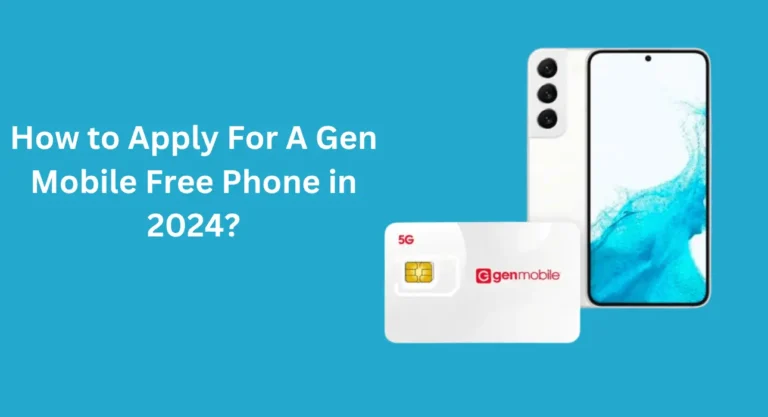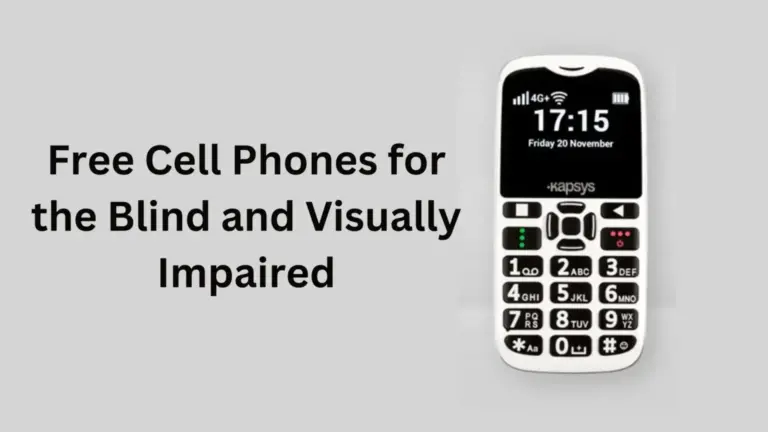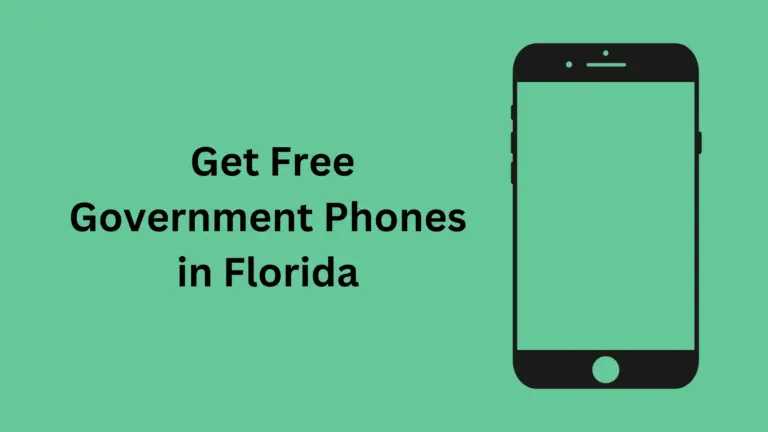How to Get Free 5G Government Phones? [Complete Guide]
Imagine using a smartphone that gives you super-fast 5G internet, smooth video streaming, and clear video calls without paying anything. This is possible through the government’s Lifeline and Affordable Connectivity Programs (ACP). If you qualify, you can enjoy these amazing benefits. In this guide, we’ll show you how to get your free 5G government phones, explain who can get them, and list the best providers that offer these programs.
Government Programs for Free 5G Government Phone
Lifeline Program
The Lifeline Program helps people with low income by giving them a monthly discount on phone or internet service. Although it doesn’t give away phones directly, some companies involved in this program may offer free 5G government phones with unlimited data.
The companies offering these deals can differ based on where you live. You can use the provided link to find out which company serves your area by entering your zip code.
The goal of Lifeline is to make sure everyone can stay connected, no matter their financial situation. To qualify, you usually need to be part of certain federal assistance programs or meet specific income guidelines, which can vary by state.
Affordable Connectivity Program (ACP)
The Affordable Connectivity Program (ACP) is a new program that replaces the Emergency Broadband Benefit. Its goal is to make phone and internet services more affordable for people with low incomes in the US.
Although ACP mainly helps with internet costs, some companies involved may also provide free or very cheap smartphones.
This program is separate from Lifeline, but if you’re already getting help from Lifeline, you’re also eligible for ACP.
How to Qualify for Free 5G Government Phones?
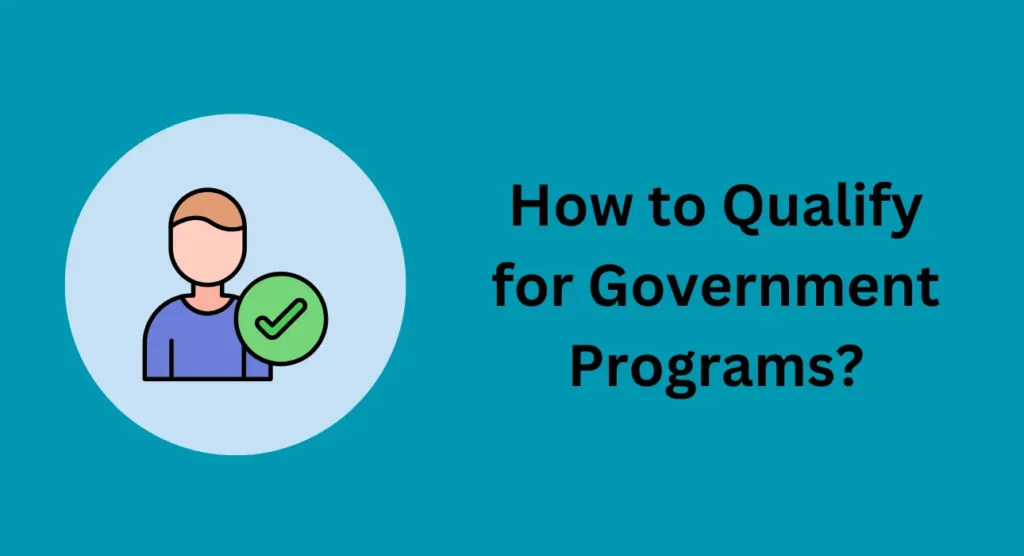
Qualifying for the Lifeline Assistance Program
To be eligible for the Lifeline Assistance Program, you need to meet one of two criteria: your income level or participation in certain government programs. Here’s a closer look:
Income
You qualify for Lifeline if your total household income is at or below 135% of the federal poverty level. The exact income limit can vary depending on your state and the number of people in your household. You can find out the specific income limits for your state and household size by checking the provided link.
Government Programs
If you or someone in your household is part of a federal assistance program, you’re likely eligible for Lifeline. Federal programs include SNAP, Medicaid, SSI, FPHA, and Veterans Pension and Survivors Benefit. Tribal programs like Tribal TANF, Head Start, Bureau of Indian Affairs General Assistance, and the Food Distribution Program on Indian Reservations also qualify.
Qualifying for the Affordable Connectivity Program (ACP)
To qualify for ACP, you can also meet one of two criteria: your income level or participation in certain government programs. Here’s what you need to know:
Income
For ACP, your household income must be at or below 200% of the federal poverty level. This limit can change depending on where you live and the number of people in your home. Places like Hawaii and Alaska have different limits, so be sure to check the specific guidelines for your area.
Government Programs
You qualify for ACP if you or anyone in your household is part of a government assistance program like SSI, SNAP, or Medicaid. Additionally, if you’re already receiving Lifeline benefits, you automatically qualify for ACP. Also, if you’ve received a Pell Grant this year, you’re eligible for ACP benefits.
How Can I Get a Free 5G Phone?
1. Check Your Eligibility
First, find out if you qualify for the Lifeline or ACP programs. You can do this by visiting their official websites or getting help from local organizations. Use tools like the Lifeline National Verifier or the ACP’s online application system to quickly check your eligibility by entering your details.
2. Choose a Provider
Next, pick a provider that is part of the Lifeline or ACP programs. Some popular providers are:
- StandUp Wireless
- SafeLink Wireless
- Assurance Wireless
- Cintex Wireless
- AT&T
- T-Mobile
- Verizon
These providers offer different plans and phone models. Some might also include extra benefits like unlimited texting, more data, or additional minutes.
3. Gather the Necessary Documents
Get your documents ready to prove you qualify. You’ll usually need:
- Proof of Identity: A government-issued ID like a driver’s license, state ID, or passport.
- Proof of Address: Documents such as a utility bill, lease, or official mail showing your name and address.
- Proof of Income or Program Participation: This could be pay stubs, tax returns, unemployment statements, or letters showing you’re part of programs like Medicaid or SNAP.
- Social Security Number (SSN) or Tribal Identification Number (TIN): Needed for identity verification.
Having these documents ready will help speed up your application.
4. Complete the Application
Apply online or in person with your chosen provider. Follow the instructions carefully and double-check that all the information is correct to avoid any delays. Most providers offer a simple online application, but you can also apply in person if you prefer. Make sure to submit all required documents with your application.
5. Wait for Approval
The approval process might take a few weeks. Be patient and keep an eye out for updates on your application status. Some providers might approve your application right away if you apply online and your documents are easily verified.
6. Receive Your Phone
Once you’re approved, you’ll get free 5G government phones. Delivery times can vary from 1 to 7 business days, and some providers may offer faster shipping options.
You should also check: How to Get a Qlink Wireless Free Phone?
Providers Offering Free 5G Government Phones
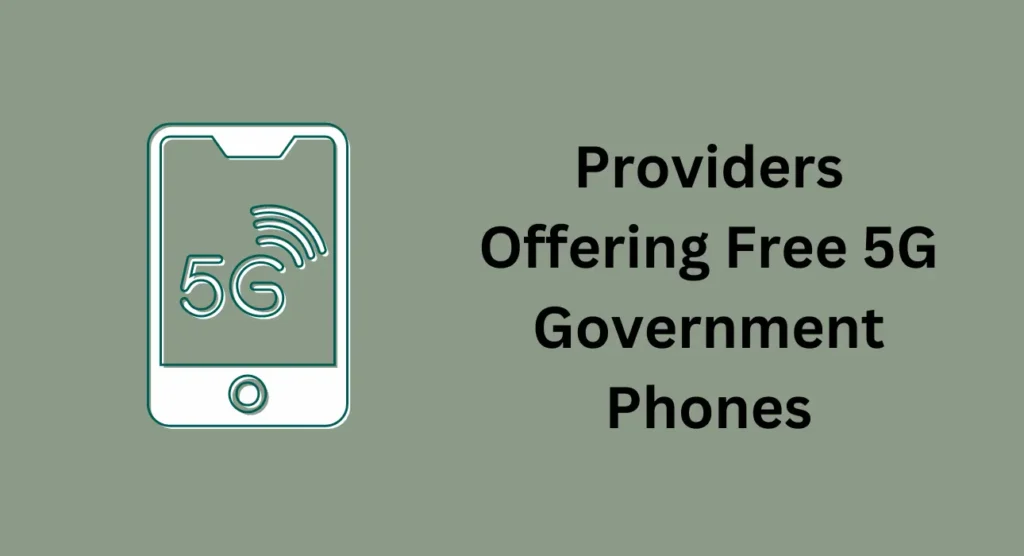
StandUp Wireless
StandUp Wireless provides a variety of 5G phones through the Lifeline and ACP programs. They offer up to 10GB of high-speed data, plus unlimited talk and text. With nationwide coverage, they aim to make the application process easy and offer great customer support to help with any questions.
SafeLink Wireless
SafeLink Wireless helps low-income individuals by offering free 5G government phones and services. They provide different 5G phone models, free SIM cards, and unlimited data, calls, and texts. Their services are available nationwide, making them a dependable option for those who qualify.
Assurance Wireless
Assurance Wireless, part of the Lifeline Assistance program, provides free 5G government phones and plans. They include unlimited texts and a generous amount of data. They focus on helping low-income families stay connected and offer strong customer support to guide you through the application process.
Cintex Wireless
Cintex Wireless offers a selection of free 5G government phones with unlimited data near me through the Lifeline and ACP programs. They ensure smooth connectivity and reliable service. Cintex Wireless also provides free shipping, so you receive your phone quickly.
AT&T
AT&T provides several 5G phone models through the Lifeline program. Eligible users can benefit from affordable plans and enjoy AT&T’s wide network coverage. They offer different plans, including options with unlimited data, to keep you connected.
T-Mobile
T-Mobile offers free 5G government phones through the Lifeline and ACP programs. They provide a variety of phone models and have an extensive network, making it a popular choice for many. Their competitive plans and broad coverage help keep users connected.
Verizon
Verizon gives away free 5G government phones with unlimited data near me through the Lifeline and ACP programs. They offer various phone models and ensure strong network coverage. Verizon is known for its high-quality service and reliable connectivity, making it a top pick for eligible individuals.
Types of Free 5G Government Phones
The type of 5G phone you get for free can vary based on the provider. Here are some popular brands you might receive:
- Apple
- Samsung
- Motorola
- Xiaomi
- Lenovo
- LG
These brands offer a variety of models, so you can receive a phone with different features based on what the provider has available.
Conclusion
Free 5G government phones provide a great opportunity for people with low incomes to stay connected with fast internet speeds and modern technology. These phones help bridge the digital divide and ensure everyone has access to essential communication services. By participating in programs like Lifeline and ACP, eligible individuals can enjoy the benefits of 5G without any cost. It’s a valuable resource for staying connected in today’s digital world.


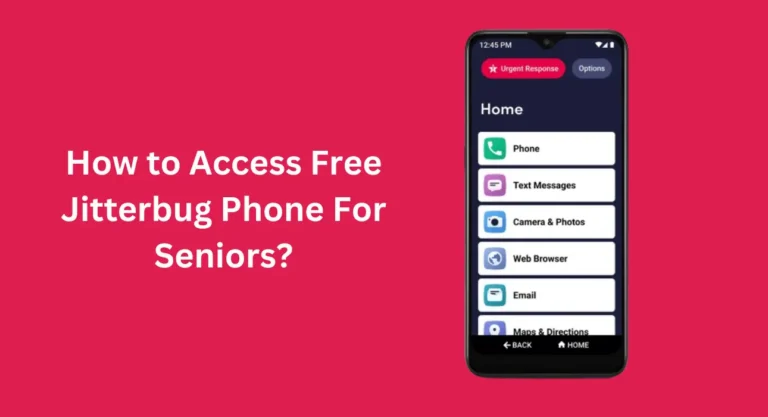
![AARP Free Cell Phones for Seniors [Complete Guide 2024]](https://phonesguides.com/wp-content/uploads/2024/08/How-to-Check-SafeLink-Wireless-Application-Status-11-1-1-768x417.webp)

